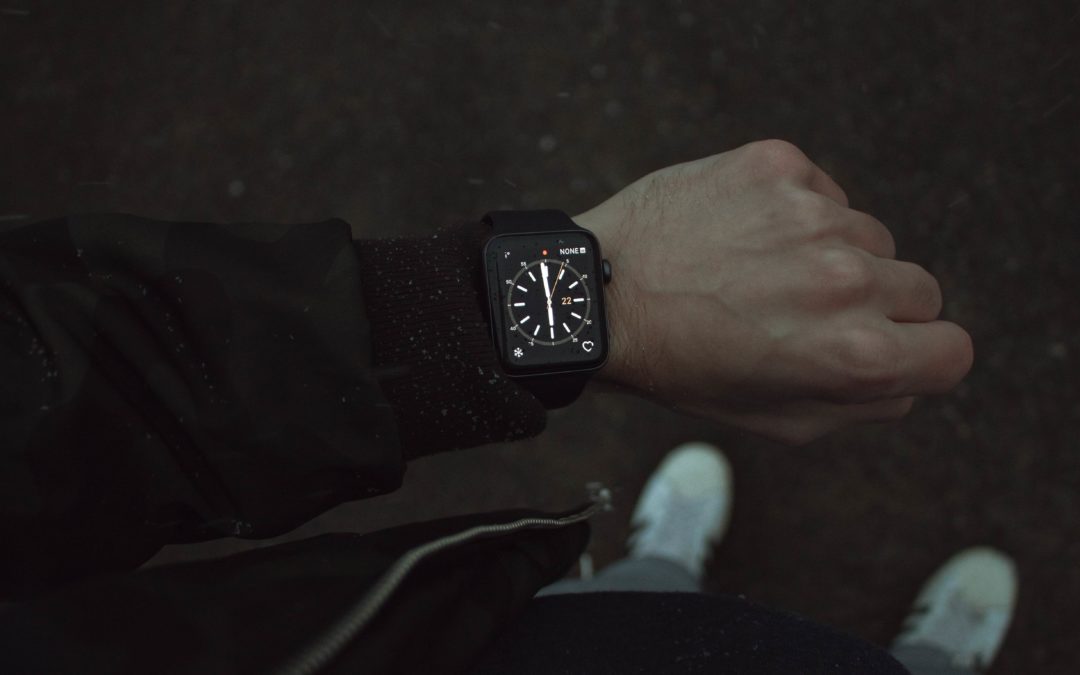
by Don Basile | May 7, 2019 | Tech
Wearable tech has been a slowly rising trend over the past decade. Most wearables these days are health-related, and tracking the body is a difficult task. We’ve seen tech such as sleep trackers and fitness trackers prove beneficial for consumers, but wearables have yet to achieve their full potential. With graphene, that may just become possible.
Graphene is well-known as a “wonder material,” and looking at its properties, it’s easy to see why. Graphene is one of the thinnest materials known to man; it is made up of a single layer of carbon atoms, all connected and interlaced into a lattice, honeycomb-like formation. In addition to being thin, graphene is also incredibly light. But don’t let its size fool you — it’s nearly 200 times stronger than steel, and possess technological capabilities far beyond our current materials provide.
Graphene is excellent at conducting heat and electricity, and the material is a frontrunner in replacing copper and silicon in tech devices. For instance, graphene is particularly good as a sensor, and is being researched for a variety of sensor types, including for gas, DNA, pH levels, environmental contamination, pressure, and more.
Graphene can also potentially impact wearables by powering them for greater capability and lasting power. Using graphene to create next-gen flexible batteries, University of Glasgow researchers have successfully created a graphene supercapacitor that is capable of recharging using solar power and discharges enough energy to power advanced wearable devices.
The most recent and perhaps most important breakthrough in graphene wearables to date were featured at the 2019 Mobile World Congress (MWC) in their Graphene Pavillion. Research nonprofit organization ICFO presented revolutionary graphene-based health-monitoring wearables; these devices are less like the watches and bands that currently occupy much of the wearable tech space, and instead acts like a dermal patch. This means that the graphene wearable can be applied directly to the skin, which can result in improved readings when monitoring health metrics.
ICFO supposes that this graphene tech would be useful in monitoring hydration and blood oxygen levels. This would be particularly helpful for when people are in extreme conditions, such as at the Earth’s poles, high altitudes, or anywhere far from civilization. In such situations, someone could apply the patch, which would use graphene to create miniscule sensors, circuits, and batteries to power the wearable and allow it to track internal data.
The patch would then be paired with a smartphone to allow for real-time communication, and will notify users when they are at risk of dehydration or other severe medical statuses. The patches will also be made to be disposable, and the researchers at ICFO are working to ensure that all components, even necessary adhesives, are biodegradable and environmentally friendly.
With the newly revealed patch-like wearable, graphene is beginning to show the world how it can disrupt various tech-based industries, and the healthcare and medical fields are sure to benefit from graphene research. With the wonder material in its hands, the wearable tech industry is sure to continue making leaps and bounds moving forward.

by Don Basile | Dec 13, 2018 | Tech
Even with layers upon layers of thick clothing, there is only so much regular fabrics can do to fight the cold. So how can we make our clothes do more to keep us warm? While it may seem like a less obvious avenue for technological advancement, the use of lightweight and conductive fibers to create smart thermal clothing have the potential to create new breakthroughs for insulation. We are already seeing promising advancements in smart thermal clothing, and it has the potential to much more effectively protect people from cold and even detect the onset of cold-related conditions, such as hypothermia or frostbite.
Smart thermal clothing entered the tech landscape years ago, but many of the developed incarnations at the time were bulky and inefficient, using invasive and uncomfortable wires or large batteries. For smart thermal clothing, the ultimate goal is to be completely unobstructive, regulating a person’s temperature with little to no inconvenience. As we continue to make advancements in specific lightweight fibers, such as ones made with graphene, we are beginning to see truly viable forms of smart thermal clothing.
SKIINCore is one such clothing range that boasts effective smart thermal clothing. Their products, which include a thin long-sleeve top and leggings, utilize a conductive yarn that is sandwiched between a sweat-wicking synthetic inner layer and a heat-trapping wool outer layer. It uses a small non-intrusive 56g battery for heating power, able to keep the wearer warm for up to eight hours. Users can adjust temperatures with a smartphone app, or let the “smart” in smart thermal clothing shine by allowing the clothes to automatically adjust heat levels based on environment and body temperatures.
Another example of exemplary smart thermal clothing comes from Directa Plus, an Italian company that makes graphene-based products. They recently launched two textile collections utilizing their Graphene Plus (G+) material, made from a patented Pristine Graphene Nanoplatelet design. Their G+ membranes can be applied to a flexible range of clothing, including sportswear, citywear or workwear. The use of graphene-based materials increase heat conductivity and spreads the heat evenly throughout the material to regulate overall body temperature. The G+ membrane also amplifies electrical conductivity, allowing for accurate transmission of data from the body.
With such advancements in smart thermal clothing, and smart clothes in general becoming an increasingly popular trend, the future for these heat-regulating garments looks bright. Already we are seeing effective smart thermal clothing options for mainstream consumers. But the utilization of lightweight fibers like graphene and other inconspicuous conductive materials in clothing still have much room for growth, and it seems that very soon in the future we will see smart thermal clothing become truly intelligent.

by Don Basile | Feb 15, 2017 | Sports, Tech
Every year, the Consumer Electronics Show unveils the hottest new tech products and trends, which predictably leave tech junkies drooling with anticipation. This is just as true for sports technology, which makes its debut in various iterations at CES to the delight of those like myself with interest in this growing field.
2017’s CES opened on January 5 in Las Vegas with just as much fanfare as usual, and with it a slew of amazing new products.
FitBit, which recently acquired Pepple, unveiled its new personal trainer app. It is also partnering with nutrition app Habit, indoor training bike company Peloton, and VR sports pioneer VirZOOM, and even Uber — though we may just have to wait and see what comes of these. Nonetheless, FitBit has proven itself an industry leader in athletic wearable tech.
Another product that cropped up at CES was Athlete Recovery Sleepwear, introduced by Under Armor. In partnership with Tom Brady, Under Armor’s product promises to help regulate body temperature and improve sleep for better daytime performance.
Other smart apparel at CES include the Pro Team Shirt, which comfortable operates as a heart monitor and GPS, a smart baseball training shirt from SwingIQ, and a smart running shoe by Sensoria and VIVOBAREFOOT.
Biometric data wearables are also proving to be a trend, and the less visible, the better. According to Sports Illustrated, a trend called “hearables,” as demonstrated by in-ear data trackers by Bodytrak, KUAI, and the Dash. These small devices are perfect for collecting internal metrics, like core body temperature, while also having the ability to play music. Fun!
All in all, it looks like another successful CES for athletes and for fans. It’s clearer than ever that as technology gets more advanced, so does the athletic prospects and fan experience of those that adopt it.

by Don Basile | Dec 26, 2016 | Sports, Tech
As technology becomes omnipresent in people’s lives–people go about their lives smartphone in hand–it follows that we would no longer have to carry technology, but simply slip it on. Smartwatches and fitness trackers are the first widespread wave of wearable technology, but they certainly will not be the last. These wrist devices are already gathering vast amounts of information about their wearers that can be translated into lifestyle research, which will inevitably lead to even more convenient tech accessories.
The trick with wearable technology, however, has not been ease of use, but style. The trendsetters who pioneer new fashion styles could also pave the way for wearable tech, but it will need to look the part. The contradiction is in the name: for technology to be wearable, it will need to look enough like fashion. But tech geeks have never been known as fashion plates, so what happens when these two worlds collide?
For decades, Apple has been the frontrunner for sleek product design, and indeed, their Apple Watch–like their phones–can now command a wait. However, a wearable not only needs to look good enough to be shown off, but needs to function well enough to become essential. Otherwise, why wear it in the first place? Fashion is famously ephemeral, but wearable technology cannot afford to be so short-lived. Although new models will be released, both the functionality and aesthetic need to meet certain standards for wearable tech to be fully integrated into people’s lives.
Wearable technology also offers a valuable service to athletes that could make it a functional part of sports uniforms. Major League Baseball players experimented with wearable technology this past year on a voluntary basis. Approved devices were evaluated and tested before they were allowed on the field, and rules govern the gathering and use of information. But wearable technology could greatly help athletes and their support staff monitor players’ health and performance when they are most active.
Technology isn’t going away, which means it will likely become even more integral to our daily lives. What better way to weave technology into the day-to-day than by wearing it?

by Don Basile | Dec 9, 2016 | Sports, Tech
These days, the stadium is more than just a vessel–it’s an experience in and of itself. With new technology cropping up and improving every year, sports venues are doing their best to stay up-to-date. Certain elements are this are more than just nice to have–they are both necessities and opportunities.
Take wifi, for example. While a decade ago, fans might be content to keep their smartphones away during a game, the stakes are higher now. Connectivity is a priority for younger fans, and Cisco reports that Internet is “as important as air, water, food and shelter to one in three college students and young professionals.” This may sound hyperbolic, but think about it. Many of us live a significant portion of our lives online, with our social and professional lives hinging on Internet access. Without wifi, you’re probably going to lose your fans at halftime.
Then, there’s improved home technology. High definition big screen TVs make viewing a game at home just as awesome, twice as comfortable, and much cheaper than visiting the game physically. So there has to be something at the stadium fans can’t get at home. How about in-arena interactive hotspots? Sports leagues and brands are both leaning into this trend by building high-tech experiences that enhance fans’ stadium experience.
But don’t forget, the smartphone might be the biggest opportunity of all, and with fast, easy-access wifi, both advertisers and national leagues can hook into fans’ phones. Think seat upgrades, easy food and beverage purchasing, insider facts and insights, or any other number of modern, digital conveniences.
For an example of a high-tech stadium, look no further than Brooklyn’s Barclays center, one of the most connected stadiums in the world. Thanks to smart design and innovative ideas, fans can upgrade seats and even get notifications when the restroom line is shortest.
There’s also the in-process Mercedes Benz Stadium, which I’ve blogged about previously. In partnership with the Atlanta Falcons, IBM, and Daktronics, the smart stadium will give fans 360-degree views of the on-field action, employing state of the art sustainable technologies all the while. The goal is to give fans the best experience possible, complete with awesome technology, while using as little energy as possible.
If the stadiums of the future keep integrating technology that delights fans, provides perks, and saves energy to boot, the world of sports is in for an exciting ride in coming decades. After all, sports are all about connecting communities over shared passions. What better way to do that than going all in on digital?




